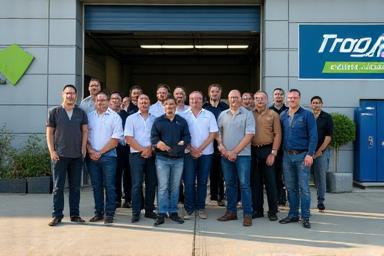Votre voiture, notre passion :
PropreAuto Services à Lyon
pour un résultat professionnel et durable.
pour particuliers et entreprises.

À propos de PropreAuto
Née au cœur de Lyon, PropreAuto Services incarne un nouveau standard du lavage auto : le soin du détail allié à une forte conscience écologique. Notre priorité : offrir à chaque automobiliste une expérience personnalisée et une propreté irréprochable, sans compromis sur l’environnement.
Guidée par plus de dix ans de pratiques innovantes et responsables, notre équipe mise sur des technologies de pointe et privilégie des produits biodégradables. Partenaires de confiance des entreprises lyonnaises et des particuliers exigeants, nous transformons chaque prestation en engagement de qualité.
Au quotidien, nous nous engageons : valoriser votre véhicule tout en préservant les ressources de la région lyonnaise, pour un avenir plus propre et durable.
Années d’expérience
Interventions/mois
Clients pro

Nos Services

Lavage Extérieur & Intérieur
Nettoyage approfondi de la carrosserie, des jantes, des tissus, des plastiques et des surfaces vitrées, réalisé exclusivement avec des produits respectueux de votre santé et de la planète. Fini les traces : votre véhicule retrouve brillance et fraîcheur en un temps record.

Detailing & Finitions Premium
Offrez à votre voiture un traitement d’exception : polissage professionnel, cire protectrice, rénovateurs hydrophobes et finitions personnalisées. L’assurance d’une esthétique de haut niveau et d’une protection durable contre les agressions extérieures.

Restauration d’Optiques
Rendez à vos phares toute leur transparence grâce à notre expertise : élimination de l’opacité, polissage, application de traitements protecteurs pour une visibilité accrue, une sécurité améliorée et une allure rajeunie de votre véhicule.

Nettoyage Moteur
Découvrez un nettoyage moteur sécurisé, sans risque pour l’électronique de votre voiture. Améliorez la performance, prolongez la durée de vie de votre moteur et bénéficiez d’un compartiment débarrassé de toutes impuretés.

Solutions Écoresponsables
Notre choix : des produits biodégradables, des techniques économes en eau, ou même sans eau. Pour chaque prestation, bénéficiez d’un résultat professionnel dans le respect de notre engagement écologique.
Pourquoi choisir PropreAuto Services ?

Écologie et sécurité
Nos méthodes privilégient l’économie d’eau, l’usage limité de produits chimiques, et l’adaptation sur-mesure à chaque véhicule. Optez pour un lavage efficace tout en préservant votre santé et celle de notre environnement.

Qualité professionnelle
Chaque prestation est réalisée par des experts diplômés, formés aux procédés les plus performants du secteur auto. Notre garantie : un résultat irréprochable, visible dès le premier passage !

Rapidité & flexibilité
Qu’il s’agisse d’une intervention chez vous, sur votre lieu de travail ou dans notre atelier à Lyon, nous nous adaptons à votre emploi du temps. La disponibilité et la réactivité font notre réputation.
Ils parlent de nous
Notre équipe

Samuel Benattar
Spécialiste lavage & finitionsSamuel maîtrise à la perfection les techniques de nettoyage à basse consommation d’eau, et garantit un résultat optimal, même pour les exigences les plus pointues.
Contactez-nous
Besoin d’un devis, d’un rendez-vous ou d’une information ?
L’équipe PropreAuto est à votre écoute.
42 Rue des Acacias, 2ème étage, 69003 Lyon, France









